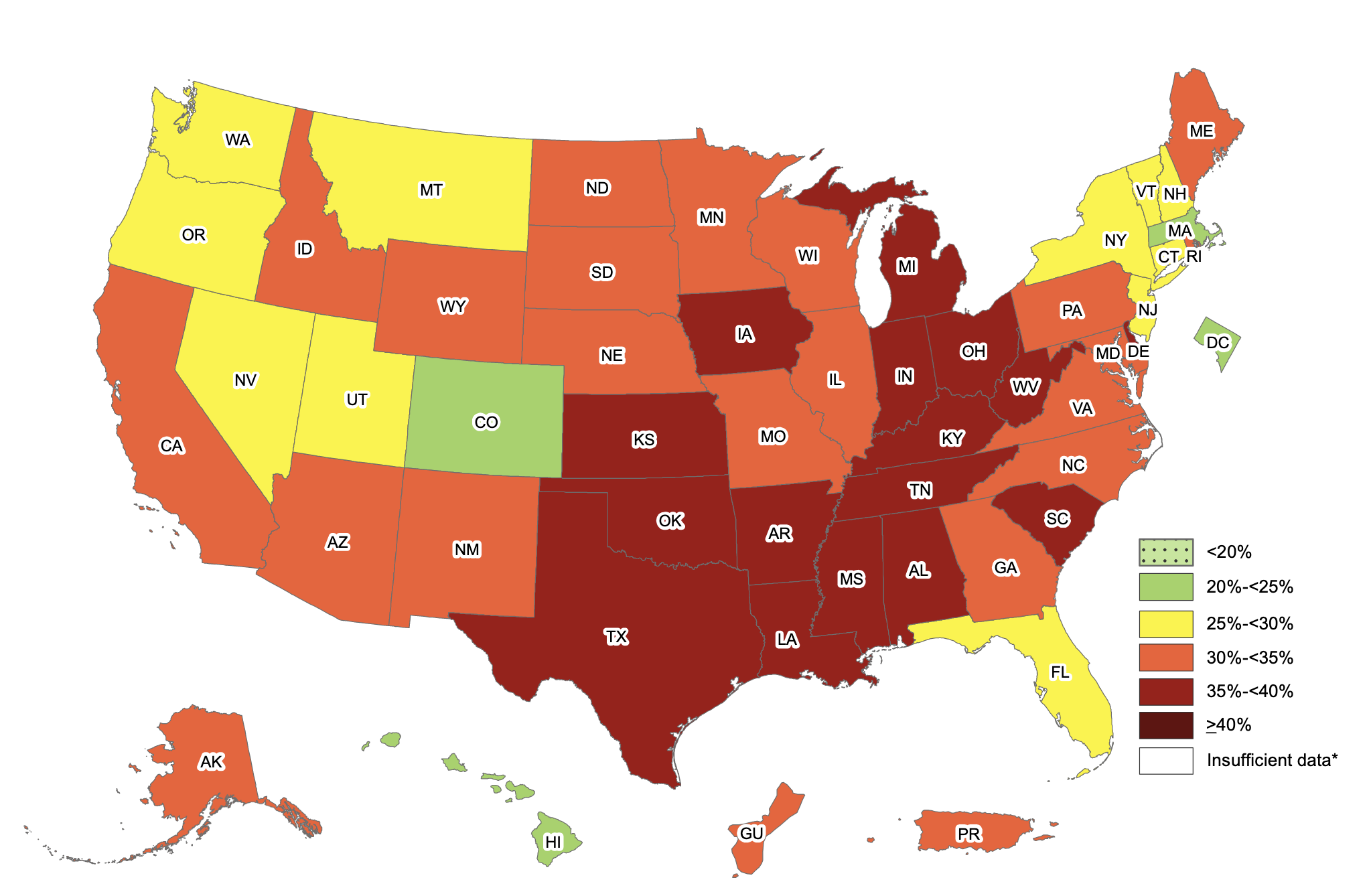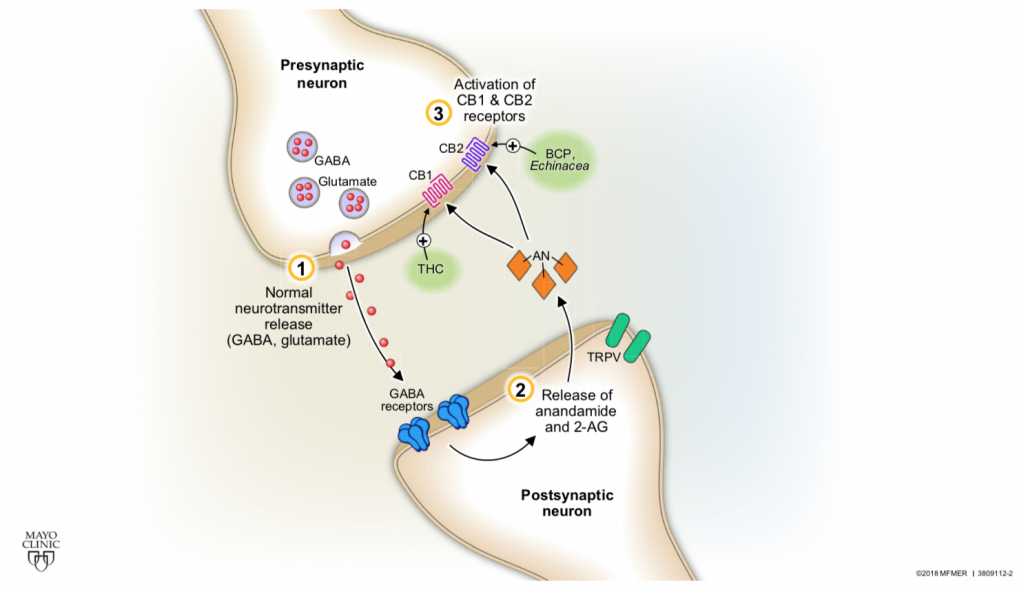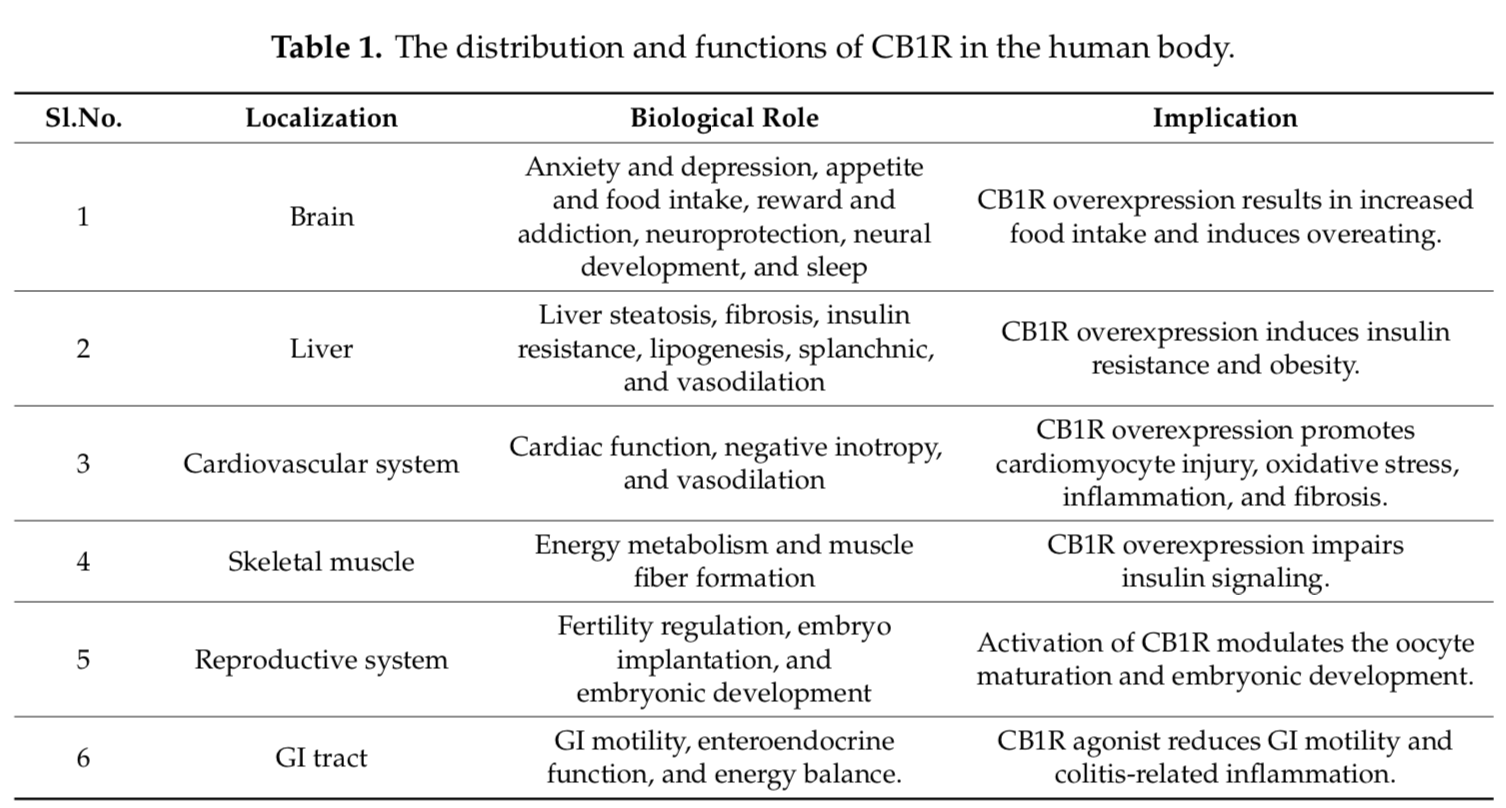Obesity Basics

Obesity has been identified a top 10 global health problem by the World Health Organization. According to the CDC, nearly 42.4% of the adult population in the US were obese in the year of 2017. In figure 1, the color of each state represents the percentage of obese individuals in that state within 2020.
An important contributor is increased caloric intake without increased physical activity. An increase in calorie consumption is conducive to an increase in appetite from increasing craving and liking of food. The main brain system involved in craving and liking is the endocannabinoid system (ECS).
The Endocannabinoid System
The ECS functions to adjust behavior and metabolism according to food availability. Its action range from regulating sensory responses to developing preference for the consumption of high caloric food. In today’s world it appears that the ECS favors obesity and metabolic disease as food is readily available, especially “junk” food.
The ECS receptor in the brain is the cannabinoid-1 receptor (CB1). Researchers have examined the effects of activating and deactivating this receptor has on the body.
CB1
Cannabinoids and endocannabinoids bind this receptor. Figure 2 represents a simple schematic of the retrograde signaling of the ECS system.

Cannabis has been documented as promoting eating through strong cravings and an intensification of the sensory and hedonic properties of food. It has been demonstrated that the hyperphagic actions of THC (one of the psychoactive constituents of cannabis) were mediated in large part by cannabinoid CB1 receptors. Additionally, researchers saw that, systemic anandamide (an endocannabinoid) administration caused an increase in food intake. Later experiments confirmed that other endocannabinoids (2-AG and noladin ether) also increased food intake. Therefore CB1 agonists promote eating behaviors that lead to obesity.
In addition to CB1 agonists, researchers determined that CB1 antagonist suppressed food intake. They found that mice without CB1 receptors had a reduced sensitivity to the motivating properties of food, exhibiting reduced rates of responding for food and lower breakpoints when given a task to obtain food. In effect, the stimulatory actions of cannabinoids on eating resembles the changes that occur in food deprivation: levels of

anandamide and 2-AG increase after fasting. Therefore, this shows that endocannabinoids have an effect on the food intake of the brain without any drug influence.
In figure 3, you can see how some researchers believe CB1 signaling can affect insulin signaling that could in turn mediate weight gain. This activation of the CB1 signaling can be done by endocannabinoids (anandamide) or cannabinoids (THC).

In figure 4, it describes the different locations of CB1 receptors and their pathological implications. As you can see the ECS is implicated in many agents of obesity development.
Overall, CB1 agonists show to increase wanting and liking of food AND CB1 antagonists show to decrease these. The endocannabinoid system plays an important role in the development and control of obesity. However, the exact mechanisms of these neurotransmitters on a cellular level are still not completely understood. Therefore, research must continue to clarify how endocannabinoids and cannabinoids can mediate obesity and how they might be able to be a part of treatment.
References:
https://www.cell.com/trends/endocrinology-metabolism/fulltext/S1043-2760(15)00140-X
https://www.mdpi.com/1422-0067/20/9/2109
https://gaiaguru.co.uk/cannabinoid-receptor-1-basics/
https://www.cdc.gov/obesity/data/prevalence-maps.html#overall
